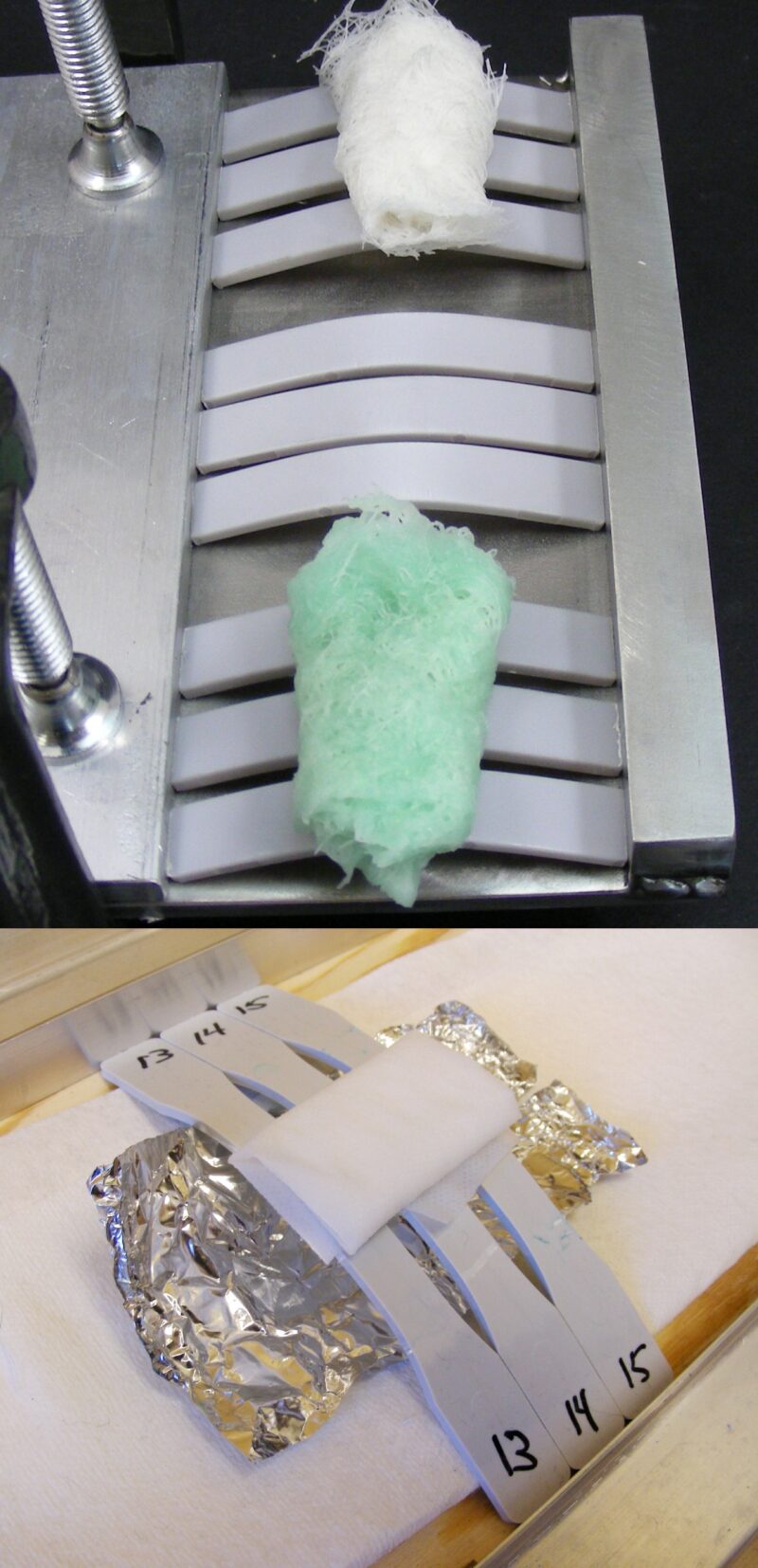A common chemical compatibility test for thermoplastic materials is a bent strip test where a chemical is locally applied to a specimen while under a controlled strain level, Figure 1. The strain levels selected are typically below yield, but are higher than what the part would experience in the field in order to accelerate the appearance of any adverse interactions. This test is intended to evaluate the environmental stress crack resistance (ESCR) for a plastic material. The sample is periodically inspected for cracking during the chemical exposure period, and may also be mechanically tested for property retention at the conclusion of the test. This test method is good for determining bulk chemical incompatibilities of plastic materials, and should be conducted at the onset of any new product development process where chemical exposures are known and expected.

Figure 1: ESC test setups using flex and tensile bars.
An issue with this method is that the testing is typically performed on samples with optimal material properties, whereas failures in plastic parts often present themselves at areas of less-than-ideal material/part properties. A well-molded single end-gated tensile bar will have an optimal molecular orientation in the gage length, no significant degradation, a smooth surface, and no knit lines. Often times, the specimens may also be annealed prior to the testing to reduce molded-in stresses. This ideal material condition for the testing will almost never imitate the actual condition of a molded plastic part.
A plastic part will commonly possess molded-in stress, knit lines, thickness transitions, abrupt geometric features, and varying levels of molecular weight reduction. Therefore, caution must be taken when translating chemical compatibility data generated for an ideal material specimen, to the expected performance of that material in an injection molded part.
For example, plastic materials will typically have reduced mechanical properties at a knit line. Per a knit line study conducted by BASF(1), this reduction can be as high as 20% for common unfilled materials and up to 80% or more for highly reinforced materials. The same mechanisms leading to reduced mechanical properties at the knit line will also reduce the ESC resistance of the material at the knit line. Thus, a resin that appears to be compatible with a chemical under the ideal test conditions, may suddenly start failing at the knit line after exposure to a chemical that was thought to be acceptable.
In the above scenario, a study of the chemical compatibility on a dual end-gated tensile bar with a knit line in the gage length could have revealed the incompatibility. In this situation, the typical chemical screening failed, which highlighted the need for tailoring a chemical compatibility test to the reality of the situation, not just the ideal case.
Other factors that could make normally compatible chemicals develop a heightened level of incompatibility with a molded part could be processing-induced degradation, changes in molecular weight, molded-in residual stresses, and sharp geometric features. These factors all have the effect of increasing stress levels or reducing the strength of the material, both of which will correspondingly reduce the material’s resistance to potential ESC agents.
When developing a chemical compatibility test for a new product or material, take a hard look at the part design. Does it have knit lines? Does it have sharp corners? Might it have residual stress? If the answer is “yes” to any of these questions, the standard chemical compatibility test methods may not be enough.
(1) Reference: OPTIMIZED MECHANICAL PERFORMANCE OF WELDED AND MOLDED BUTT JOINTS: PART II – WELD AND KNIT LINES INTEGRITY. BASF Corporation. 2003. Retrieved from www.basf.com.
This paper was originally authored by Jacob Nemec.
